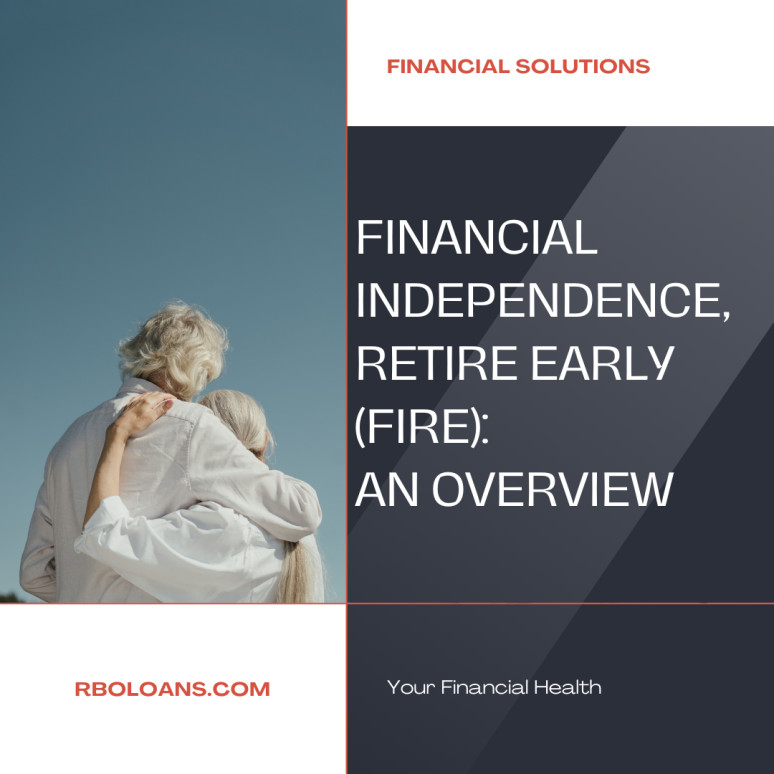Financial Independence, Retire Early (FIRE): An Overview

The concept of Financial Independence, Retire Early (FIRE) has captured the imagination of many aspiring to achieve early retirement and financial freedom. At its core, FIRE is about accumulating sufficient personal wealth to support your lifestyle indefinitely without needing to work full-time. This movement, gaining traction in recent years, appeals to those disillusioned with the traditional career trajectory that suggests working until the age of 65 or beyond.
Principles of FIRE
At the heart of the Financial Independence, Retire Early (FIRE) movement is a simple, yet powerful set of principles focused on financial discipline and smart investing. The goal is to achieve a financial state where working becomes optional, allowing individuals to retire much earlier than the conventional retirement age. Here’s how it breaks down:
Definition of Financial Independence and Retiring Early
Financial independence means having enough income to cover your living expenses for the rest of your life without being employed or dependent on others. Retiring early refers to the ability to stop working before the traditional retirement age, often in one's 40s or 50s. Achieving this requires a significant departure from the conventional approach to spending, saving, and investing.
Core Principles
- Saving Aggressively: The FIRE movement advocates for a frugal lifestyle, where a substantial portion of income—often 50% or more—is saved or invested. This high savings rate is critical to accelerating the journey to financial independence.
- Investing Wisely: Simply saving money isn't enough. The saved funds must be invested in assets that yield returns above inflation, such as stocks, bonds, real estate, or other income-generating investments. This is where compound interest plays a pivotal role, potentially turning modest savings into substantial wealth over time.
- The Importance of a High Savings Rate: The cornerstone of FIRE is the savings rate. It's not just about how much money one earns but how much of it can be saved and invested. The higher the savings rate, the faster one can reach financial independence. This principle challenges individuals to live well below their means, reallocating the usual expenditures towards savings and investments.
Paths to FIRE
The journey to financial independence and early retirement is not one-size-fits-all. Depending on one's income, lifestyle preferences, and financial goals, there are several paths within the FIRE movement:
- Traditional FIRE
This approach targets saving 25-30 times your annual expenses, aiming for a 4% annual withdrawal rate in retirement. Ideal for those seeking a balance between saving aggressively and enjoying life, it often leads to early retirement in the early to mid-50s.
- LeanFIRE
For those who prioritize minimalism, LeanFIRE involves strict budgeting to significantly reduce expenses. The goal is to retire early on a smaller nest egg, embracing a frugal lifestyle that focuses on simplicity and essential living.
- FatFIRE
Contrary to LeanFIRE, FatFIRE is for individuals aiming for a more luxurious early retirement, requiring a larger savings goal. This path suits high earners who wish to maintain or enhance their standard of living in retirement.
- BaristaFIRE
This option involves achieving partial financial independence and working a part-time job for additional income and benefits. It's named for the idea of working a low-stress job (like a barista) to cover health insurance and other expenses while enjoying the fruits of early investment and savings efforts.
By understanding these paths, individuals can better navigate their journey to FIRE, selecting the route that best aligns with their income levels, lifestyle preferences, and long-term financial goals.
Strategies for Achieving FIRE
Achieving financial independence and the option to retire early requires a multifaceted strategy encompassing saving, earning, and investing. Here are key strategies embraced by FIRE enthusiasts:
- Reducing Expenses
The foundation of FIRE is the ability to live below one's means, which often involves analyzing and cutting unnecessary expenses. This could mean choosing a modest home, avoiding new car loans, cooking at home rather than dining out, and generally prioritizing spending on what truly brings happiness and fulfillment.
- Increasing Income
While cutting expenses is crucial, increasing income can accelerate the journey to FIRE. This can involve seeking higher-paying jobs, acquiring new skills for career advancement, or starting side hustles. Every additional dollar earned and invested brings one closer to financial independence.
- Investment Strategies
Investing is where saved money starts working for the individual. FIRE advocates typically invest in low-cost index funds, which track the performance of a broad market index like the S&P 500. This strategy is favored for its simplicity, low fees, and historical returns. Real estate and other income-generating investments are also popular among those pursuing FIRE, offering both appreciation potential and passive income.
- Tax Optimization
Maximizing tax-advantaged accounts like 401(k)s, IRAs, and HSAs can significantly enhance investment growth. Understanding how to efficiently manage taxes can lead to substantial savings, which can be reinvested towards the goal of financial independence.

Challenges and Criticisms
The FIRE movement, while inspiring for many, is not without its challenges and critics. Here are some of the main points of contention and the hurdles aspiring FIRE followers might face:
- Sustainability of Withdrawal Rates
The often-cited 4% rule, which suggests that one can safely withdraw 4% of their retirement savings annually without running out of money, has come under scrutiny. Critics argue that changing market conditions and economic downturns can erode the principal, especially in the early years of retirement, potentially making the strategy unsustainable for some.
- Market Volatility
Investing a large portion of savings in the stock market exposes FIRE adherents to market volatility. Significant market downturns, especially near or shortly after the point of retirement, can have a drastic impact on the sustainability of one's nest egg, a phenomenon known as sequence-of-returns risk.
- Underestimating Living Expenses
There's a risk of underestimating future living expenses, including healthcare, inflation, and unexpected costs. Critics argue that the lean lifestyle required for early retirement may not be feasible or desirable in the long term, particularly as one's circumstances and priorities change.
- Social and Psychological Impacts
Detractors also point to potential social and psychological impacts of early retirement, such as loss of social connections, identity crises, and boredom. The transition from a full-time career to early retirement requires significant adjustment and may not lead to the fulfillment one anticipates.
- FIRE is Not for Everyone
Critics highlight that the FIRE movement is primarily accessible to those with higher incomes, making it an unrealistic goal for many. It assumes a level of privilege and financial flexibility that isn't available to all, raising questions about its applicability to the broader population.
Case Studies and Success Stories
Despite these challenges, there are numerous success stories of individuals and couples who have achieved FIRE, each tailoring the principles to their unique situations. Here are brief overviews of a few such cases:
- The Frugal Engineer: A software engineer managed to retire in his early 30s by living frugally, saving over 70% of his income, and investing in a diversified portfolio of index funds. He now spends his time traveling and working on passion projects.
- The Real Estate Duo: A couple invested in rental properties, using the income to cover their living expenses. They achieved financial independence in their 40s, allowing them to pursue hobbies and spend more time with family.
- The Side Hustler: Starting a successful online business as a side hustle, this individual was able to leave her 9-to-5 job by the age of 35. She continues to work on her business, not out of necessity, but for personal fulfillment and to continue growing her investments.
These stories exemplify the variety within the FIRE movement, showing that with creativity, discipline, and a focus on long-term goals, financial independence and early retirement can be within reach for many.
Conclusion
The Financial Independence, Retire Early (FIRE) movement offers a radical rethinking of personal finance, lifestyle, and the conventional career path. While not without its challenges and criticisms, FIRE provides a framework for achieving financial freedom and living a life aligned with one's values and goals.
For those considering the FIRE journey, it's important to weigh the potential benefits against the challenges and to consider the sustainability of your chosen path. Financial independence is a powerful goal, but the journey to achieving it is personal and nuanced, requiring careful planning and adaptability.
As we've seen through various case studies, success on this path is possible and can lead to a fulfilling post-retirement life. However, it's crucial to approach FIRE with a realistic understanding of your financial situation, personal aspirations, and the potential risks involved. With the right mindset and strategies, achieving financial independence and the freedom to retire early can be more than just a dream.

-small.jpg)
-small.jpg)

-small.jpg)
